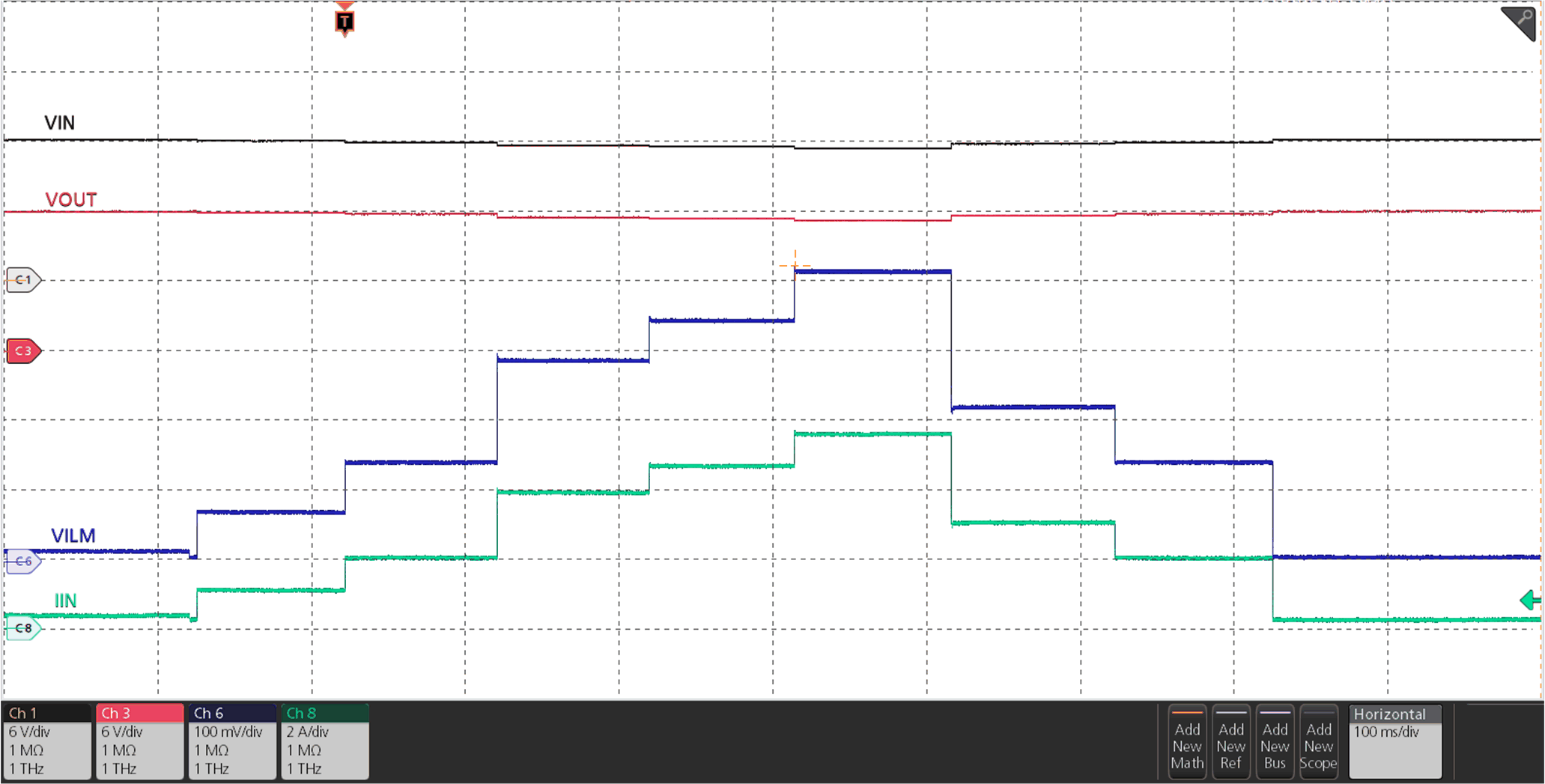SLVSGG5C november 2021 – april 2023 TPS2597
PRODUCTION DATA
- 1 Features
- 2 Applications
- 3 Description
- 4 Revision History
- 5 Device Comparison Table
- 6 Pin Configuration and Functions
- 7 Specifications
-
8 Detailed Description
- 8.1 Overview
- 8.2 Functional Block Diagram
- 8.3
Feature Description
- 8.3.1 Undervoltage Lockout (UVLO and UVP)
- 8.3.2 Overvoltage Lockout (OVLO)
- 8.3.3 Overvoltage Clamp (OVC)
- 8.3.4 Inrush Current, Overcurrent, and Short Circuit Protection
- 8.3.5 Analog Load Current Monitor
- 8.3.6 Overtemperature Protection (OTP)
- 8.3.7 Fault Response and Indication (FLT)
- 8.3.8 Power-Good Indication (PG)
- 8.4 Device Functional Modes
- 9 Application and Implementation
- 10Device and Documentation Support
- 11Mechanical, Packaging, and Orderable Information
8.3.5 Analog Load Current Monitor
The device allows the system to accurately monitor the output load current by providing an analog current sense output on the ILM pin, which is proportional to the current through the FET. The user can sense the voltage (VILM) across the RILM to get a measure of the output load current.
Equation 9.
The waveform below shows the ILM signal response to a load step at the output.

| VIN = 12 V, RILM = 715 Ω, IOUT varied dynamically between 0 A and 5.5 A |
Note: The ILM pin is sensitive to capacitive loading. Careful design and layout is needed to
ensure the parasitic capacitive loading on the ILM pin is < 50 pF for stable
operation.